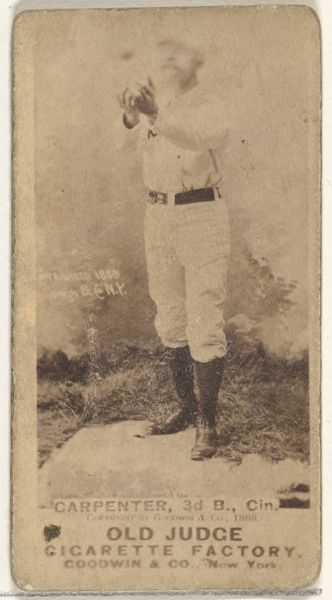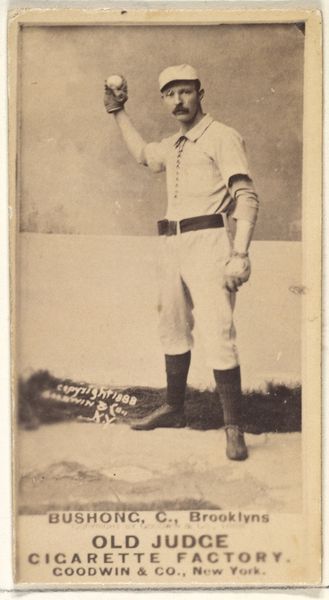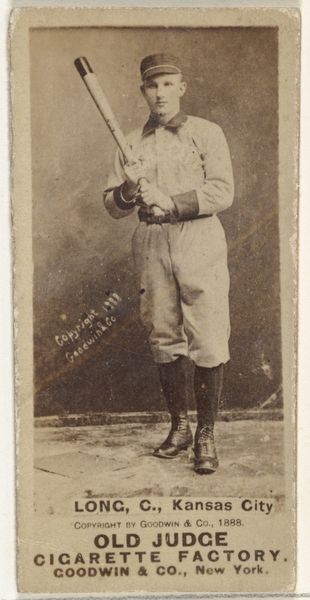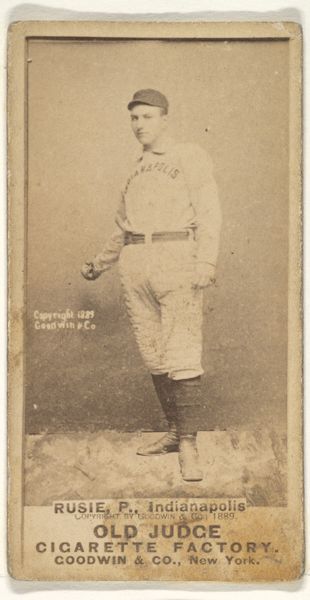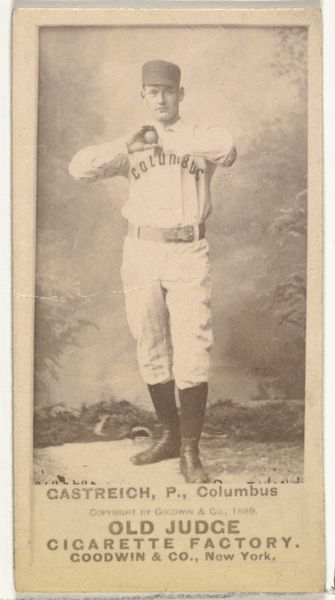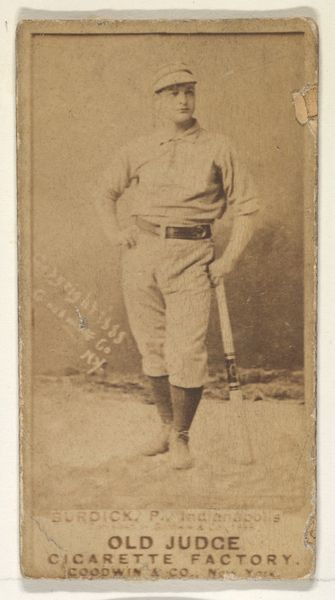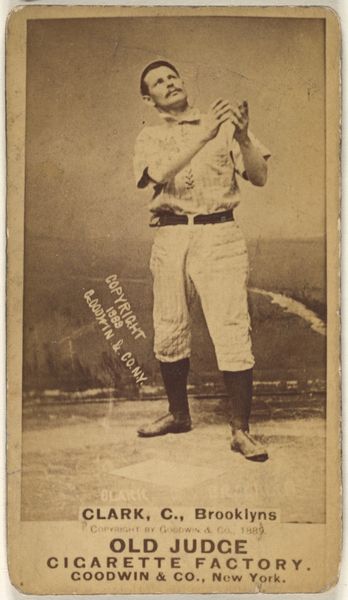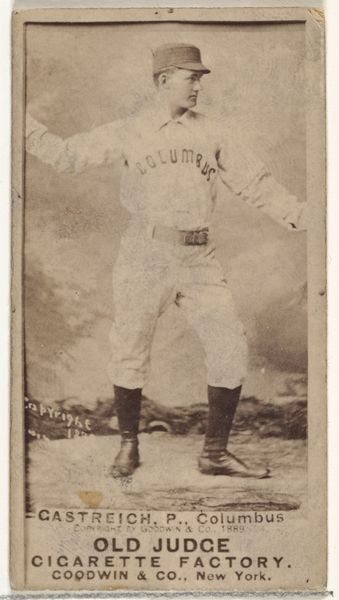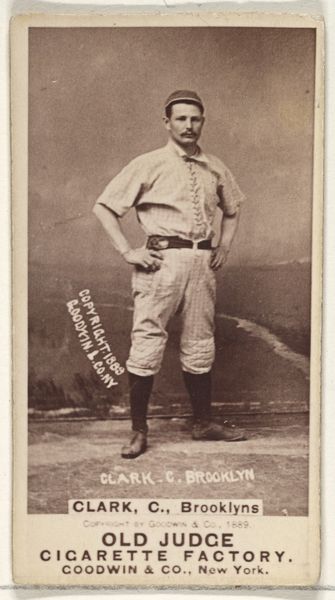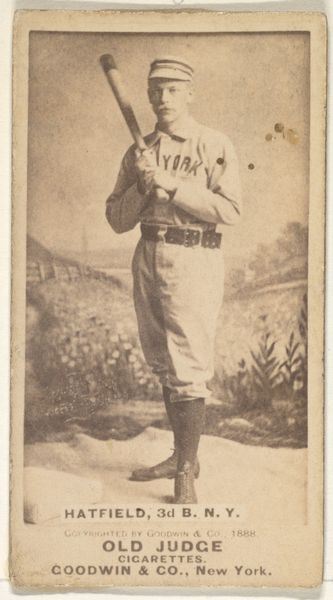
Visner, Catcher, Brooklyn Bridegrooms, from the Old Judge series (N172) for Old Judge Cigarettes 1889
0:00
0:00
drawing, print, photography
#
portrait
#
drawing
# print
#
baseball
#
photography
#
photojournalism
#
19th century
#
men
#
athlete
Dimensions: sheet: 2 11/16 x 1 3/8 in. (6.9 x 3.5 cm)
Copyright: Public Domain
Editor: So, here we have a baseball card from 1889 featuring Visner, a catcher for the Brooklyn Bridegrooms. It’s a photographic print, a portrait really. What immediately strikes me is how staged and formal it seems, like he’s posing for a painted portrait. How do you interpret this work? Curator: Well, it’s essential to remember that this image isn't just about baseball. Consider it within the context of late 19th-century advertising and burgeoning consumer culture. Goodwin & Company produced these cards to be included in Old Judge Cigarette packs. It's fascinating how sports, specifically baseball, became a vehicle for marketing. What does it mean that Visner's image, and thus his identity, is being commodified and consumed alongside tobacco? Editor: That makes me think about how these cards were circulated, mostly by men who could afford cigarettes. Were there conversations happening then about the ethics of using athletes to promote smoking? Curator: Doubtful, at least not on a wide scale. But it opens up avenues to discuss constructions of masculinity at the time. The image presents Visner as both athletic and aligned with a specific kind of consumerism, contributing to an ideal, or perhaps a myth, of what it meant to be a man. Editor: So, in a way, this seemingly simple baseball card is actually reflecting complex social power dynamics. Curator: Precisely. These kinds of images contributed to narratives that normalized certain behaviors and ideals, often reinforcing existing hierarchies related to class, gender, and even race. Consider, who got to be represented and consumed in this manner, and who was excluded? Editor: I hadn’t thought about all of that. Now I see this card less as a celebration of baseball and more as a document reflecting the values and power structures of its time. Curator: Exactly, it’s about questioning what is normalized and what those normalizations hide.
Comments
No comments
Be the first to comment and join the conversation on the ultimate creative platform.
